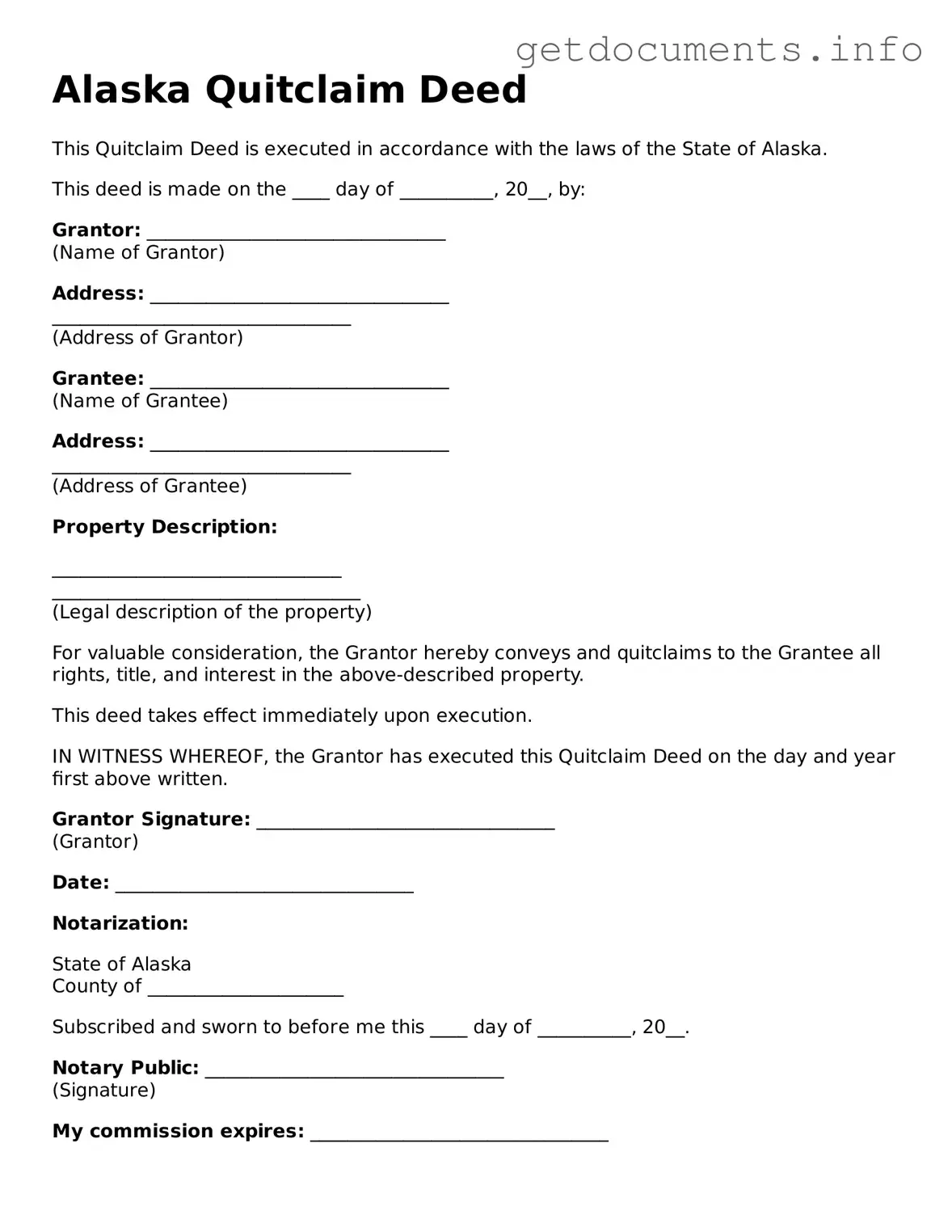When it comes to transferring property in Alaska, the Quitclaim Deed form is an essential tool that many property owners utilize. This form allows an individual, known as the grantor, to transfer their interest in a property to another person, called the grantee, without making any promises about the property’s title. Unlike other types of deeds, a Quitclaim Deed does not guarantee that the grantor holds a clear title, which means that the grantee takes on the property “as is.” This can be particularly useful in situations such as family transfers, divorces, or settling estates, where the parties involved may already have a level of trust. The form typically requires basic information, including the names of both the grantor and grantee, a legal description of the property, and the date of the transfer. Additionally, it must be signed by the grantor in front of a notary public to be legally valid. Understanding how to properly complete and file this form is crucial for anyone looking to navigate property transactions in Alaska smoothly.
